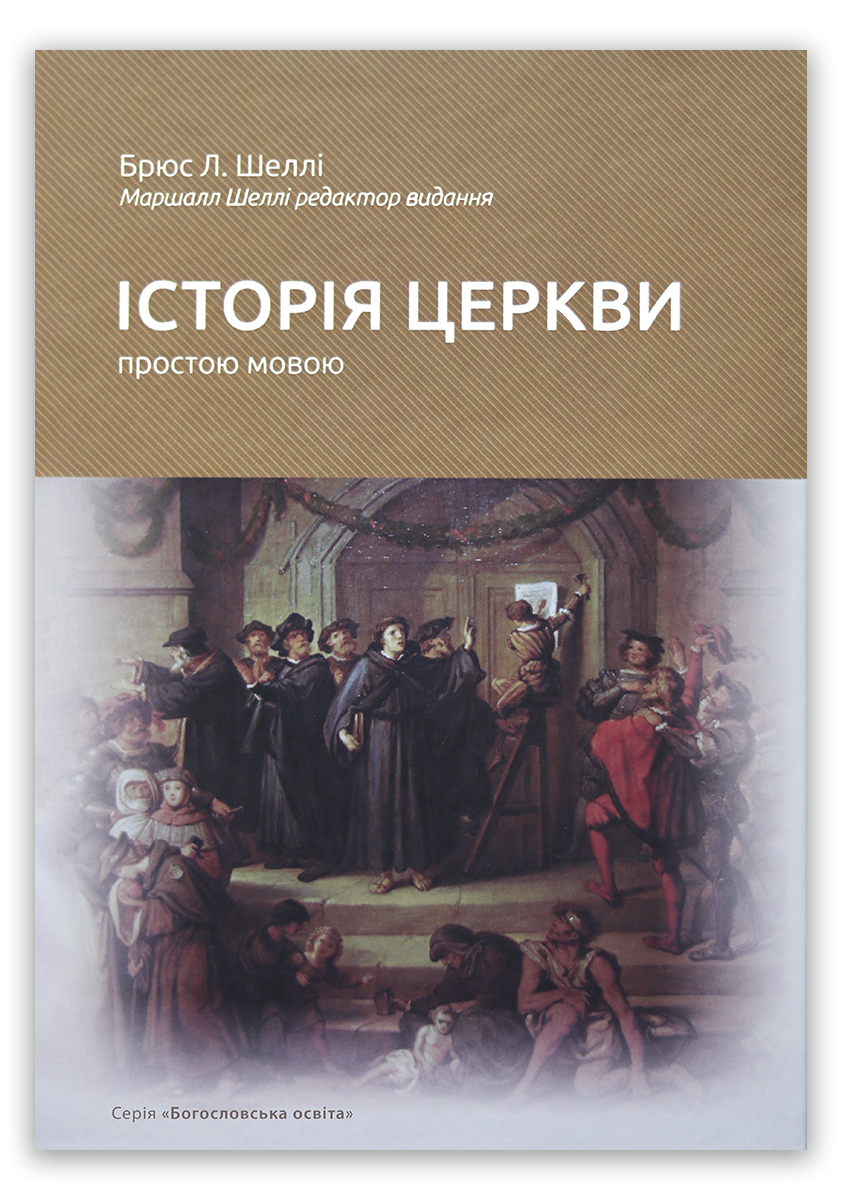


Overview of the history and methods of interpretation of the Bible
As far as we know, not much has been written about the history of Bible interpretation. Probably, the only work written on this topic is the work of Frederick V. Farrar (Frederic W. Farrar) "History of Interpretation" (History of Interpretation). However, Farrar's work is of little use to the modern reader, as it is full of lengthy quotations in Latin, and Latin is not as widely used today as it used to be. Even for students of theological schools, this work is not easy to read, since it also contains many excerpts from texts in Greek, German, French, and Hebrew, and in order to understand them, serious professional training is required. Farrar gives an overview of exegesis from the days of Ezra to the beginning of the twentieth century.
Part 1 - Historical overview
Introduction
1. The importance of the history of interpretation
2. Seven main schools of interpretation
2.1. Antiquity
2.2. Alexandria school
2.3. Patristic exegesis
2.3.1. A literal and realistic school
A. Tertullian
V. Cyprian
2.3.2. Allegorical school
A. Origen
B. Jerome
2.3.3. Historical and grammar school
A. Feodor Mopsuestiyskyi
B. Chrysostom
2.3.4. Augustine
2.4. Scholastic exegesis
2.4.1. What prevented the interpretation of the Bible in this era
A. Abelard
B. Peter Lombardsky
C. Followers of Hugo Saint-Victorsky
2.4.2. Some disadvantages of scholastic exegesis
2.4.3. Renaissance
A. Nikolay Lyrsky
B. Erasmus of Rotterdam
2.4.4. Truth casts out delusion
2.5. Hermeneutics of the reformers
A. Martin Luther
B.Jean Calvin
2.5.1. Significance of the Reformation for exegesis
2.5.2. The importance of studying hermeneutics
2.5.3. Orthodoxy
2.6. The period after the Reformation
2.6.1. Eighteenth century
2.7. The modern era (from the 19th century to the present day)
A. Richard Chenevix Trench
B. Ethelbert Bullinger
2.7.1. Contemporary books on interpretation
Part 2 - Rules of interpretation
1. Our main basic principles
2. The importance of interpretation
3. A word of caution
4. Basic rules of interpretation
5. Explanation of the basic rules of interpretation
6. Rules concerning specific areas of interpretation: prototypes, symbols and prophecies
6.1. Symbols
6.1.1. Symbolism and numerical value
6.1.2. Symbolism and meaning of color
6.2. Prophecies
7. The importance of understanding figurative expressions
7.1. Learning figurative language
7.2. The most important are figurative expressions, or physical figures
7.2.1. Figures of speech of comparison
7.2.2. Substitution figures of speech (substitutions)
7.2.3. Figures of speech linking words
7.2.4. Exaggeration figures of speech
7.2.5. Other figures of speech and idioms
8. Stages of interpretation of a text or a biblical passage

Ronald Cook is the president, professor of theology, biblical language, church history and the Bible at Trinity College (Manahath School of Theology), a higher school of theology (California).

Similar products
-

The Gospel of Jesus Christ
Author: Paul WasherCategoryDescriptionContentAuthorDetailsA short and concise reading about what the Gospel is awaits you. This book is a great evangelistic tool for supporters of Protestant churches and people who are just discovering the Good News.
Read moreThe Nature of God
God is love.
God is holy.
God is righteous.
The nature of humanity
Humanity is spiritually depraved.
Guilty and convicted
The Great Dilemma
God's answer to our dilemma
Jesus Christ, our advocate
Cross
Resurrection
Christ's Redemption
Our answer
Repentance
Do some self-examination: have you repented?
Faith
Definition of faith
Focus on faith
An example of faith
Do some self-examination: do you believe?
Assurance of salvation
Evidence of conversion
Benefits of salvation
How can we continue to live?
Bible Study
Prayer
Public identification with Christ through baptism
Cooperation with a Bible church
Growth in Sanctification
Serving in a local church
Evangelism and missions
Our hope and prayer for you
Paul Washer served as a missionary in Peru for ten years, during which time he founded the HeartCry Missionary Society to support Peruvian missionaries planting new churches. Paul Washer currently serves as a staff member of HeartCry Missionary Society. He and his wife, Charo, have four children: Ian, Evan, Rowan, and Bronwyn. He has written many best-selling books, including the Restoration of the Gospel series and the tract The Gospel of Jesus Christ.
Author Paul WasherVendor Українська реформаціяISBN 978-83-67695-49-7Year 2024Cover SoftPages count 33Language UkrainianWeight 61 gSize 135 x 205 x 4QuantityPrice ₴90.00dVendor:The Gospel of Jesus Christ
Regular price ₴90.00 UAHRegular priceUnit price / per -

Illustrated Westminster Shorter Catechism
CategoryDescriptionContentDetailsFor nearly 400 years, Christians have used the Westminster Shorter Catechism as a guide to understanding the foundations of the Christian faith.
The Westminster Shorter Catechism is a concise exposition of the Holy Scriptures, a document of the Reformed and Presbyterian churches, compiled in the form of questions and answers at the Westminster Assembly in London in 1648.
This illustrated edition breathes new life into these timeless questions and answers, helping a new generation of Christians learn the fundamental truths taken from the Bible and taught by our fathers in faith. Ira Mignoff's vivid illustrations will help adults and children immerse themselves in the meaning of each article and ponder its content.
Read moreOUR FAITH(QUESTIONS 1-38)
GOD'S LAW(QUESTIONS 39-87)
MEANS OF GRACE(QUESTIONS 88-99)
PRAYER "OUR FATHER"(QUESTIONS 100-107)
Vendor КрайнебоYear 2023Cover SolidPages count 103Language UkrainianWeight 500 gSize 215 x 229 x 12QuantityPrice ₴350.00dVendor:Illustrated Westminster Shorter Catechis...
Regular price ₴350.00 UAHRegular priceUnit price / per -

Church history in plain language
Author: Bruce ShelleyCategoryDescriptionContentAuthorDetailsBruce Shelley's classic one-volume history of the church is an easy-to-read guide to the global history of Christianity. The author takes his readers from the early centuries of the church to the modern era: he tells the story of real people, acting in concrete situations and events,
and reveals the circumstances and historical context of major periods or themes in Christian history.
The characters, the settings, and the plot make this history of the church a compelling and captivating tale. It is also intellectually compelling: here you will find an overview of the most important debates and periods of the Church up to the movements of the 21st century, the history of the spread of Christianity on all continents,
and the stories of women and non-Europeans who had a significant impact on the development of Christianity but who have been little discussed in previous church history reviews. All of this makes Shelley's History of the Church a wonderful guide to church history for any Christian!Read moreList of faith profiles
Preface to the fifth edition
The fifth edition was worked on by:
Prologue
PART 1
The time of Jesus and the apostles, 6 BC-70 AD.
1. Down with the King! The Jesus Movement
2. Old and New Wine Bottles: The Gospel for the Gentiles
PART 2
The Age of Catholic Christianity, 70-312
3. We are nothing but worthless things: Catholic Christianity
4. If the Tiber Floods: Persecution of Christians
5. Controversies about the Incarnation: The Rise of Orthodoxy
6. A Measure for Books: The Formation of the Bible
7. School for Sinners: Proper Structure
8. Apostles of Intellectuals: Interaction with Other Worldviews
9. Lands Where the Sun Rises: Early Christianity in Asia and Africa
PART 3
The Age of the Christian Roman Empire, 312-590
10. Lay the Scepter at Your Feet: The Conversion of an Empire
11. Debates over important details: The doctrine of the Trinity
12. Emmanuel! Christ in the symbols of faith
13. Exiles from Life: The Emergence of Monasticism
14. Sage of the Ages: Augustine of Hippo
15. Peter — “The Great Pontiff”: The Beginning of the Papacy
16. Somewhere Between Heaven and Earth: Eastern Orthodoxy
17. Victors Bow Their Heads: Mission to the Barbarians
PART 4
Christian Middle Ages, 590-1517
18. God's Consul: Gregory the Great
19. The Search for Unity: Charlemagne and Christendom
20. Mystical Ascension: The Papacy and the Crusaders
21. Nectar of Learning: Scholasticism
22. Song to Lady Poverty: Francis and the Apostolic Way of Life
23. Chaos and the Law of Necessity: The Decline of the Papacy
24. Justice Through Time: Wycliffe and Hus
PART 5
The Age of Reformation, 1517-1648
25. The Boar in the Vineyard: Martin Luther and Protestantism
26. Radical Discipleship: Anabaptists
27. A New Player in the Game: John Calvin and Reformed Government
28. Curse on the Crown: The Church of England
29. "The Other Man" in Manresa: The Catholic Reformation
30. And the Rock Opened: Faraway America and Asia
31. Reign of the Saints: Puritans
32. Nobody wants to die for an old idea: Denominations
PART 6
The Age of Reason and Awakening, 1648-1789
33. Fundamentals Under Sight: Cult of Reason
34. Evidence of the Heart: Pascal and the Pietists
35. The Fireman's Head: Wesley and Methodism
36. The New Order of the Ages: The Great Awakening
PART 7
The Age of Progress, 1789-1914
37. Rebuilding the Fortress: Catholicism in the Age of Progress
38. The New Social Frontier: 19th Century England
39. To the Remotest Corners of the Earth: Protestant Missions
40. The Fate of the Nation: Christian America?
41. A Bridge for Intelligent Contemporaries: Protestant Liberalism
42. Nothing to Lose but Chains: Slums and the Social Gospel
PART 8
The Age of Ideologies, 1914-1989
43. Graffiti on the Wall of Shame: Ideologies of the 20th Century
44. Outsiders in a Sick Society: American Evangelicals
45. New Creeds for Breakfast: The Ecumenical Movement
46. Healing Mercy: Roman Catholicism and the Second Vatican Council
PART 9
The Age of Technology and Spirit, 1990-
47. New Technologies, New Context: Christian Ministries in the West
48. More Peoples, More Languages: The Emergence of the Global South
Epilogue
Notes
For further study
Name index
Movement indicator
Event index

Bruce Shelley (PhD, University of Iowa) was a senior professor of Church History and Historical Theology at Denver Seminary.
Author Bruce ShelleyISBN 978-617-8295-40-0Year 2024Cover SolidPages count 596Language UkrainianWeight 1010 gSize 170 x 245 x 32QuantityPrice ₴950.00dVendor:Church history in plain language
Regular price ₴950.00 UAHRegular priceUnit price / per -

And if not, I will move your lamp
Author: Alexey KolomiytsevCategoryDescriptionContentAuthorDetails"And if not so..?" — this thought haunts every Christian. Even more often - every minister. I believe so, do I?
alive, am I leading the church correctly? How would you like to receive the appreciation of Jesus Christ while still alive, to see your state through His eyes, to correct uneven paths and boldly meet your God.And this is quite real. The first chapters of the book of Revelation are given to us by God so that we do not think about potential spiritual problems common to all believers. In them you will certainly find a description of your community, yours
life However, in addition to a detailed analysis of the problems, in each case the Lord offers real steps to correct them and encourages them with powerful promises.This book is devoted to the analysis of the first three chapters of the book of Revelation. The author presents a biblically based, balanced analysis of these texts of the Scriptures, revealing the strengths and weaknesses of the churches of any time. Reading this little book will pour into your soul that blessed peace with which you can continue to follow the Lord, being confident that your life pleases Him.
Read more1. Revelation: Why today? Why for us?
2. The message to the seven churches
3. Church without love
4. Suffering church
5. Churches close to death
6. Loyalty against blind self-confidence
 Alexey Kolomiytsev serves as a pastor-teacher at the Bible Church "Word of Grace" in Battle Ground (Washington, USA). Preaching and pastoral care are his main calling. In addition, the author heads the ministry "Word of Grace" for the training of ministers and the dissemination of biblical sermons among the Russian-speaking population. Alexey often speaks at conferences in the USA and abroad. His books include "How Not to Break in the Fog?", "Come, Let Us Worship!", "Biblical Conviction in Ministry", "Truly Free" and numerous articles. The author has two master's degrees in theology. Married. His wife Tatyana has become his faithful friend and assistant in ministry.Author Alexey KolomiytsevVendor Церковь "Слово благодати"ISBN 978-617-8215-04-0Year 2023Cover SolidPages count 192Language RussianWeight 349 gSize 148 x 216 x 16QuantityPrice ₴300.00dVendor:
Alexey Kolomiytsev serves as a pastor-teacher at the Bible Church "Word of Grace" in Battle Ground (Washington, USA). Preaching and pastoral care are his main calling. In addition, the author heads the ministry "Word of Grace" for the training of ministers and the dissemination of biblical sermons among the Russian-speaking population. Alexey often speaks at conferences in the USA and abroad. His books include "How Not to Break in the Fog?", "Come, Let Us Worship!", "Biblical Conviction in Ministry", "Truly Free" and numerous articles. The author has two master's degrees in theology. Married. His wife Tatyana has become his faithful friend and assistant in ministry.Author Alexey KolomiytsevVendor Церковь "Слово благодати"ISBN 978-617-8215-04-0Year 2023Cover SolidPages count 192Language RussianWeight 349 gSize 148 x 216 x 16QuantityPrice ₴300.00dVendor:And if not, I will move your lamp
Regular price ₴300.00 UAHRegular priceUnit price / per -

Biblical theology
Author: Gerhardus VosCategoryDescriptionContentAuthorDetailsIn the list of theological disciplines, biblical theology occupies an intermediate position between exegetics and systematic theology. It differs from systematic theology not by the fact that it is more biblical or more committed to the truths of revelation, but by the fact that the principle of ordering the content of the Bible, which it follows, is historical rather than logical.
Systematic theology considers the Bible as a single whole and strives to present its teaching in its entirety in an ordered, systematic form, while biblical theology interprets its subject from a historical point of view, trying to demonstrate the organic growth, or development, of the truths of personal revelation from the initial, personal revelation that preceded redemption, sent down in Eden, to the completion of the New Testament canon.
Read moreForeword
From the publisher
OLD TESTAMENT
Part 1. The era of Moses' revelation
1. Introduction: the nature and method of biblical theology
Four major divisions of theology
Definition of biblical theology
Different concepts consistently denoted by the term "biblical theology"
Guiding principles
Objections to the term "biblical theology"
The relationship of biblical theology to other disciplines
Method of biblical theology
The practical benefit of studying biblical theology
2. General marking of the field of revelation
Pre-redemptive and redemptive stages of personal revelation
Divisions of redemptive personal revelation
Berith
Diatheke
3. The content of pre-redemptive personal revelation
Four principles
1. The principle of fullness of life: what the symbolism of the tree of life teaches
2. Test: what does the symbolism of the tree of knowledge of good and evil teach
3. The principle of temptation and sin, symbolized by a snake
4. The principle of death, symbolized by the perishability of the physical body
Death and immortality
4. The content of the first-person revelation that announced redemption to a person
Three curses
"Seed"
Human suffering
5. Revelation to Noah and the events that led to this revelation
Siphites and Cainites
Revelation after the flood
6. The era between Noah and the great patriarchs
1. Prophetic sayings of Noah (Genesis 9:20-27)
2.List of peoples
3. Separation of languages (Genesis 11:1-9)
4. Selection of Semites as bearers of revelation and objects of redemption
7. Revelation in the age of patriarchs
Views of the critical school
The historicity of the patriarchs
Epiphany
Angel of Jehovah
Patriarch Abraham
1) The principle of election
2) Objectivity of sent gifts
3) Supernatural performance is promised
The name of God is El Shaddai
Belief in the religion of the patriarchs
Ethical aspects
Patriarch Isaac
Patriarch Jacob
1) Election
2) Dream in Bethel
3) Fight in Penuel
8. Revelation in the era of Moses
AND. The place of Moses in the Old Testament revelation
The outstanding role of Moses
B. The form of revelation in the era of Moses
The pillar is cloudy and fiery
Angel of Jehovah
The name and face of Jehovah
IN. The content of Moses' revelation
1) The historical basis of the Mosaic system established during the deliverance from Egypt
2) Conclusion berith between Jehovah and Israel
3) Organization of Israel: theocracy
4) Decalogue
5) Ceremonial law
Part 2. The era of prophets in the history of revelation
1. The place of prophecy in the Old Testament revelation
The movement that led to the formation of the kingdom
The word as a tool of prophecy
The factor of succession
Two main periods in the history of prophetism
2. The concept of prophetic ministry: terms and their etymology
Hebrew term nabhi
The Greek term prophets
The terms ro, eh and chozeh
3. History of prophetism: critical histories
History of prophetism
The origins of the nabhi-ism movement in Israel
Did the late prophets create ethical monotheism?
4. The method of receiving prophetic revelation
Kuenen's observations
The theory of the core of revelation
The theory of witchcraft
Revelation through speech and listening
Revelation through demonstration and vision
Revelation through rapture
Bodily effects
Internal mental state
Answer to extreme critical views
5. Method of transmission of prophecy
Thing
Miracles
6. The content of the prophetic revelation
AND. The nature and qualities of Jehovah
Monotheism
Prophetic teaching about the nature and qualities of Jehovah
B. The connection between Jehovah and Israel
Hosea's teaching about marriage
IN. Breaking alliances: Israel's sin
Collective sin of the people
Perversion of ritual worship
Social sin
The sin of Israel, considered by the prophets from a historical point of view
G. Judgment and restoration: prophetic eschatology
Views of the critical school of Wellhausen
Eschatological teaching of the prophets
NEW TESTAMENT
1. The character of the New Testament revelation
The new arrangement is final
Should we expect further revelation?
2. Revelation given at Christmas
Aspects of Christmas
3. Revelation associated with John the Baptist
Matthew 11:2-19
John the Baptist and Elijah
Testimony of John the Baptist about Jesus Christ
John's baptism
Baptism of Jesus by John
Descent of the Spirit on Jesus
The testimony of the Baptist about Jesus after His baptism
4. The revelation given during the trial of Jesus
Temptation in the desert
God's temptation and our own temptation
A special form of temptation of our Lord
Interpreting the tempted of the Lord
Subjection to temptation and the ability to sin
5. Revelation through the public ministry of Jesus
AND. Different aspects of Christ's ministry related to revelation
Four parts of the revelation sent through Christ
Revelation about God, sent by Jesus in the Gospels
B. The problem of development
IN. The method by which Jesus presented His teaching
Similarities
Parables in the proper sense
Proverbs-examples
The method of allegory
The philosophy of teaching proverbs
"Real" and "truth" in the Fourth Gospel
G. The attitude of Jesus to the writings of the Old Testament
"Religion of the Book"
Refutation of some critical claims
D. Jesus' teaching about God
The teaching of Jesus about the fatherhood of God
Emphasis by Jesus of divine greatness and grandeur
God's retributive justice
THERE ARE. The teaching of Jesus about the kingdom of God
1) Formal questions
2) The essence of the Kingdom
Biblical index

Gerhardus Vos — (1862-1949) was born in the Netherlands and at the age of 19 moved with his family to Grand Rapids, USA. In 1883, Vos entered the Princeton Theological Seminary, knowing, in addition to his native Dutch, German, English, French, Latin, Hebrew and Greek at the time of admission. Later, he received a doctorate from the University of Strasbourg for studies in the field of Arabic language. In 1886 Abraham Kuiper strongly invited the twenty-four-year-old Vos to take the position of professor of the Old Testament at the Free University of Amsterdam, and Herman Bavink - at the University of Kampen. Due to family circumstances, Vos stayed in the USA. In 1892, he became the first professor of biblical theology at Princeton Seminary. His best friends were other Princeton professors: Benjamin Warfield and Woodrow Wilson (the future 28th president of the United States). Warfield once said to their mutual friend Louis Berkhof: "I think he (Vos) is the best exegete of those who taught at Princeton." Gerhardus Vos is considered the founder of the discipline of biblical theology in the Reformed tradition.
Author Gerhardus VosVendor Евангелие и РеформацияISBN 978-985-7328-15-4Year 2024Cover Hardcover, dust jacketPages count 528Language RussianWeight 975 gSize 170 x 240 x 35QuantityPrice ₴1,200.00dVendor:Biblical theology
Regular price ₴1,200.00 UAHRegular priceUnit price / per






























